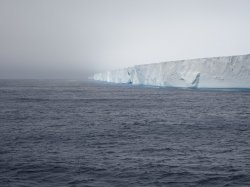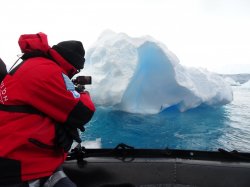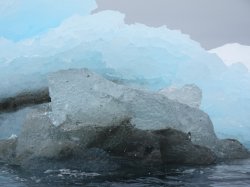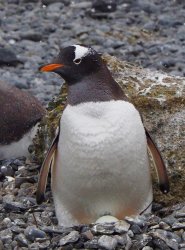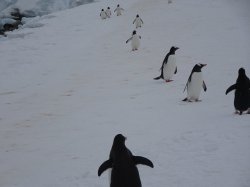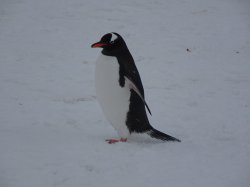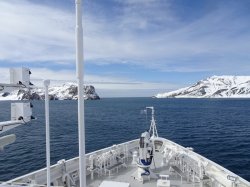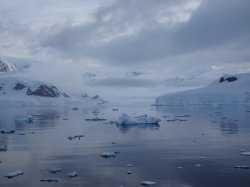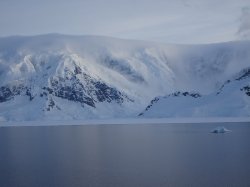So a few words about icebergs. I know you are keenly interested.

Skip to the photos if you wish

The icebergs were so diverse and so interesting that we could have watched them for ages. Yes, I know they are just lumps of ice but still their shapes and colours were so fascinating.
The facts; there are 2 main kinds, tabular which are flat on top (obviously

) and which originate from ice sheets and shelves and, wait for it, non-tabular which are from glacial or sea ice. We saw
lots of both kinds. In terms of size ice in the water ranges from brash (small chunks less than 2m across) through growlers (think the size of a Mini Cooper S), to bergybits, and small, medium, large and very large icebergs. Any iceberg greater than 68 km2 is named using a letter/number code and tracked. Antarctica is divided into quadrants – A for the Weddell Sea area, B for eastern Ross Sea, C and D. As an iceberg calves it is named. For example B15 was the 15th iceberg to originate in the Ross Sea. As it breaks up, another letter will be added, for example B15A and B15B.
I didn’t give all that information just to bore you as we sailed past 2 of the named icebergs. Unfortunately was passed B09F at night so didn’t get to see it. Considering it originated in the Ross Sea on the other side of Antarctica over 30 years ago and this fragment is 44 kms long, it is seriously large.
What we did do though was sail close to A57A a 22 km long, 10 km wide and 30 m above water tabular iceberg. It was certainly impressive! With 300 m below the water level and a sea depth of only 290 m this iceberg is well and truly grounded for the present so it’s not going anywhere soon.
